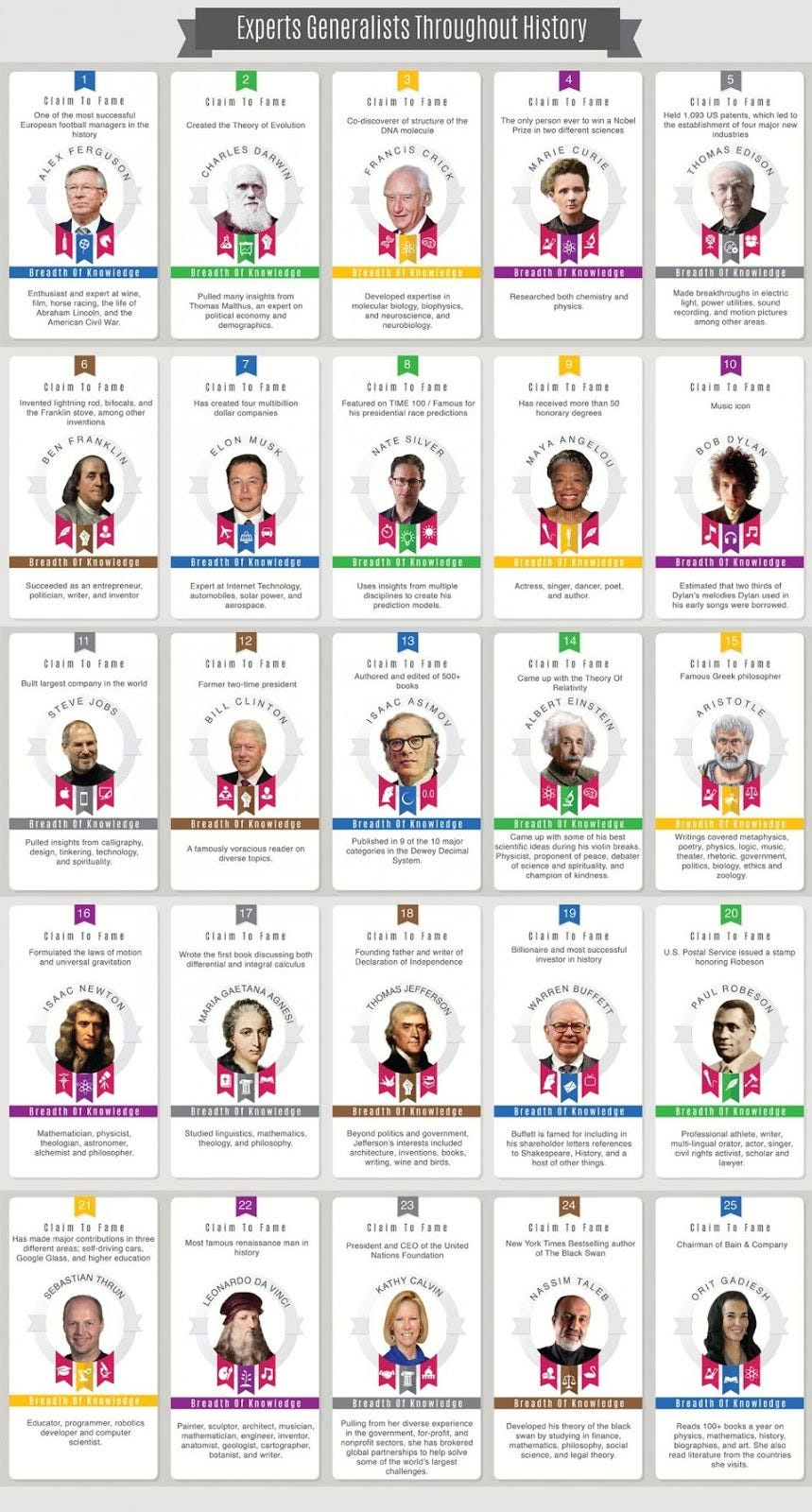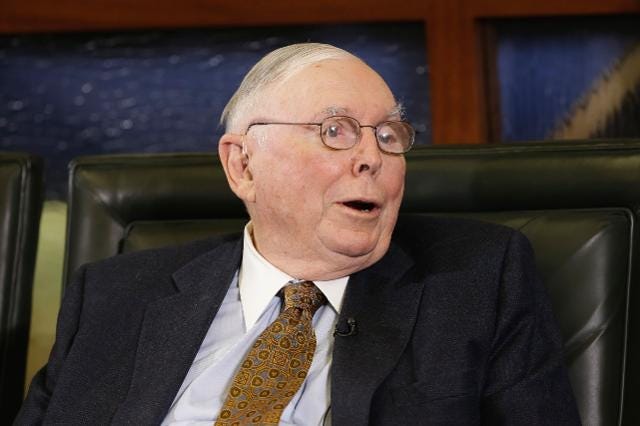How One Life Hack From A Self-Made Billionaire Leads To Exceptional Success
Author’s Note: This article was written over 60 hours with love and care using the blockbuster mental model. It was originally published on Forbes.
Countless books and articles have been written about Warren Buffett. Surprisingly few have been written about his business partner of over 40 years, Charlie Munger.
Munger has stayed out of the public eye, giving only a small number of public talks, and he’s rarely been covered in the media. At Berkshire Hathaway’s annual shareholder’s meetings, he lets Buffett answer the questions, oftentimes commenting, “I have nothing to add.”
A few years ago, I decided to learn more about Munger’s 70-year career, and I’ve been blown away ever since. When I look back on my life, I see it as one of the top turning points in my life. His model for success, backed by research, is simple and game-changing. It also flies in the face of conventional wisdom on career success.
Beyond The 10,000-Hour Rule
A great deal has been written about how deliberate practice over 10,000 hours within a specific area of expertise is the key to success in any field.
While Munger has certainly worked long and hard to become one of the world’s top investors, the signature of his success is different. According to his own account, rather than focusing on investment theory like a laser, he has studied widely and deeply in many fields, including microeconomics, psychology, law, mathematics, biology, and engineering, and applied insights from them to investing.
Bill Gates has said of Munger, “He is truly the broadest thinker I have ever encountered. From business principles to economic principles to the design of student dormitories to the design of a catamaran he has no equal… Our longest correspondence was a detailed discussion on the mating habits of naked mole rats and what the human species might learn from them.” Munger has, in short, been the ultimate expert generalist.
The Rise Of The Expert Generalist
The rival argument to the 10,000-hour rule is the expert-generalist approach. Orit Gadiesh, chairman of Bain & Co, who coined the term, describes the expert-generalist as:
Someone who has the ability and curiosity to master and collect expertise in many different disciplines, industries, skills, capabilities, countries, and topics., etc. He or she can then, without necessarily even realizing it, but often by design:
Draw on that palette of diverse knowledge to recognize patterns and connect the dots across multiple areas.
Drill deep to focus and perfect the thinking.
The concept is commonly represented by this model of the “T-shaped individual”:
While the 10,000-hour rule works well in areas with defined rules that don’t change such as sports, music, and games, the rules of business constantly and fundamentally change. A 2014 review of 88 previous studies found that “deliberate practice explained 26% of the variance in performance for games, 21% for music, 18% for sports, 4% for education, and less than 1% for professions. We conclude that deliberate practice is important but not as important as has been argued.” This chart summarizing the results should cause any ardent believer in the 10,000-hour rule to pause:
Being an expert generalist allows individuals to quickly adapt to change. Research shows that they:
See the world more accurately and make better predictions of the future because they are not as susceptible to the biases and assumptions prevailing in any given field or community.
Have more breakthrough ideas, because they pull insights that already work in one area into ones where they haven’t been tried yet.
Build deeper connections with people who are different than them because of understanding their perspectives.
Build more open networks, which allows them to serve as a connector between people in different groups. According to network science research, having an open network is the #1 predictor of career success.
Mental Models: Charlie Munger’s Unique Approach To Being An Expert-Generalist
Developing the habit of mastering the multiple models which underlie reality is the best thing you can do.
—Charlie Munger
In connecting the dots across the disciplines, Munger has developed a set of what he calls mental models, which he uses to assess investment opportunities. In fact, he’s identified over 100 of these models that he uses frequently.
What are these models exactly?
The best way to explain this is to take the case of one he uses constantly, which he calls Two-Track analysis. It combines insights from psychology, neuroscience, and economics about the nature of human behavior. This model instructs that when analyzing any situation in which decision-making by people is involved, which, of course, covers every business situation, he must consider two tracks:
How they would act if they behaved rationally, according to their true best interests.
How they would succumb to the pull of a number of irrational psychological biases that seem to be “programmed” into the human brain. Researchers have identified a host of them, and Munger has incorporated twenty-five of them into his Two-Track analysis model.
Another example is classical conditioning developed by Ivan Pavlov in the early 20th century. Pavlov discovered that with the right conditioning, dogs would salivate not just when eating food, but also in anticipation of it when he walked into the laboratory. Munger applies the same logic to business. In his book, he gives the example of how Coca-Cola (one of Berkshire Hathaway’s largest holdings) conditions its customers with the right frequency and type of advertising while using their logo as the trigger.
At its essence, a mental model is a simplified, scaled-down version of some aspect of the world: a schematic of a particular piece of reality. They are deep principles that apply across every area of our life, are always relevant, and provide immediate results by helping us make better decisions.
Munger is not alone in his love of mental models. Many of the most successful entrepreneurs and thinkers in history use some form of mental model thinking:
The better decision maker has at his/her disposal repertoires of possible actions; checklists of things to think about before he acts; and mechanisms to evoke these.
—Nobel Laureate Herbert Simon, Author Of Models Of My Life
The quality of our mental models determines how well we function in the natural world.
—Billionaire Charles Koch
Principles are concepts that can be applied over and over again in similar circumstances as distinct from narrow answers to specific questions. Every game has principles that successful players master to achieve winning results. So does life. Principles are ways of successfully dealing with the laws of nature or the laws of life. Those who understand more of them and understand them well know how to interact with the world more effectively than those who know fewer of them or know them less well.
—Self-Made Billionaire Ray Dalio (Dalio uses the word Principles instead of Mental Models, but he uses it to communicate the same idea.)
How To Actually Use Mental Models Right Now To Be A Better Thinker
The following is a summary of his rules on being an expert generalist in his own words, excerpted and condensed from the various talks he’s given:
Rule #1: Learn Multiple Models
The first rule is that you’ve got to have multiple models—because if you just have one or two that you’re using, the nature of human psychology is such that you’ll torture reality so that it fits your models.
It’s like the old saying, ‘To the man with only a hammer, every problem looks like a nail.’ But that’s a perfectly disastrous way to think and a perfectly disastrous way to operate in the world.
Rule #2: Learn Multiple Models From Multiple Disciplines
And the models have to come from multiple disciplines — because all the wisdom of the world is not to be found in one little academic department.
Rule #3: Focus On Big Ideas From The Big Disciplines (20% Of Models Create 80% Of The Results)
You may say, ‘My God, this is already getting way too tough.’ But, fortunately, it isn’t that tough — because 80 or 90 important models will carry about 90% of the freight in making you a worldly-wise person. And, of those, only a mere handful really carry very heavy freight.
This mental model is known as the 80/20 rule. In many situations such as your diet, exercise, friendships, knowledge, and your to-do list, 20% of the inputs create 80% of the results. I spent over 100 hours creating the most condensed and in-depth resource in the world on this topic, and you can access it here.
Rule #4: Use A Checklist To Ensure You’re Factoring in the Right Models
Use a checklist to be sure you get all of the main models.
How can smart people be wrong? Well, the answer is that they don’t…take all the main models from psychology and use them as a checklist in reviewing outcomes in complex systems.
Rule #5: Create Multiple Checklists And Use The Right One For The Situation
You need a different checklist and different mental models for different companies. I can never make it easy by saying, ‘Here are three things.’ You have to drive it yourself to ingrain it in your head for the rest of your life.
The Expert-Generalist Approach In Different Fields
Whether or not you decide to follow Munger’s particular approach, one clear takeaway is the value of gaining a wide breadth of knowledge while also drilling deeply into your area of specialty.
Many of the top scientists, business leaders, inventors, and artists throughout time have also achieved their breakthrough successes by being an expert-generalist. Albert Einstein was trained in physics, but to formulate his law of general relativity, he taught himself an area of mathematics far removed from his expertise, Riemannian geometry. James Watson and Francis Crick combined discoveries in X-ray diffraction technology, chemistry, evolutionary theory, and computation to solve the puzzle of the double helix. Steve Jobs, of course, drew on insights from his study of calligraphy and a rich understanding of design to create a new breed of computing devices.
Here is an infographic with 25 of the top expert generalists throughout history:

Bain & Company chairman, Orit Gadiesh, attests to the value of being a voracious reader across many domains in her own career, saying:
Being an expert-generalist has helped Bain see things for our clients that others miss, as we provide unique insights from one industry into another. The approach has differentiated Bain from its competitors.
“I bring into my work everything I do; all of my past consulting projects, all of my readings [100+ books a year]. I read novels. I read about physics, mathematics, history, biographies, art. One reason I work well in Germany is that I’ve read a lot of German literature, German philosophers, German history, etc., even though I’m Israeli. They’re great writers. Likewise, I can work in France because I’ve read their literature. I’ve read Japanese literature, Korean literature, English literature, American literature, Israeli literature, and on and on. I bring all of that somehow into my work. And I think that makes me better at what I do. It also makes life more interesting.
What’s more, those who can bridge the gaps between silos are becoming more valuable than ever as the amount of knowledge in the world and its fragmentation continue to accelerate.




